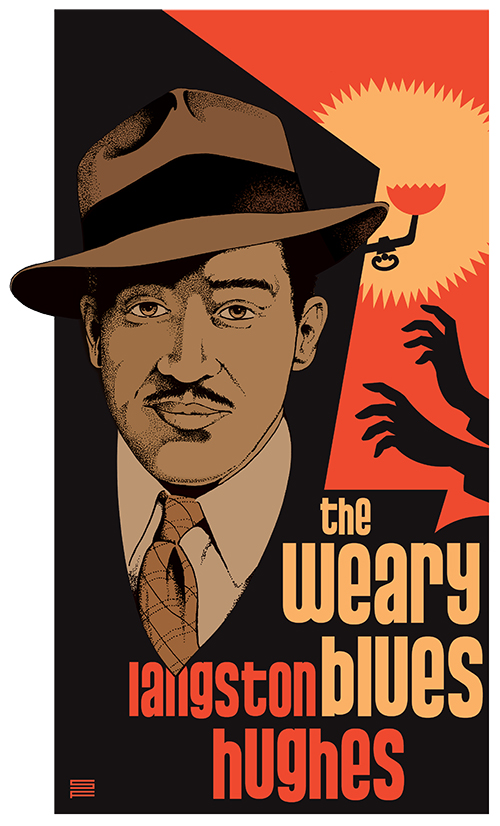

LANGSTON HUGHES
(1901-1967)
The poetry and fiction of Langston Hughes portrayed the lives of working-class Blacks in America, lives he portrayed as full of struggle, joy, laughter, and music. Written in 1925, The Weary Blues highlights Hughes’s ability to incorporate poetry with music, and history with art, giving him the reputation as one of the leading Black artists of the 20th century.
“In all my life I have never been free. I have never been able to do anything with freedom, except in the field of my writing. With my parents, with my employers in my struggle for food, in all the material circumstances of life, I have been forced to move this way and that — only when I sat down for a moment to write have I been able to put down what I wanted to put down, to say what I’ve wanted to say, when and where I choose.
“So far, only my writing has been my own, to do when I wanted to do it, to finish only when I felt that it was finished, to put it aside or discard it completely if I chose. For the sake of my physical body I have washed thousands of hotel dishes, cooked, scrubbed decks, worked 12 to 15 hours a day on a farm, swallowed my pride for the help of philanthropy and charity — but nobody ever said to me “You must write now, you must finish that poem tomorrow. You must begin to create on the first of the month.” Because then I could not have created anything. I could only have put down empty words at best…
The creative urge must come from within.”
-surviving draft of a letter, 1930
Background art based on the original book cover design for The Weary Blues by Miguel Covarrubias, published in 1926.
